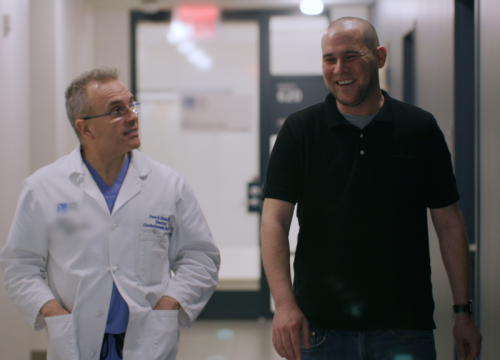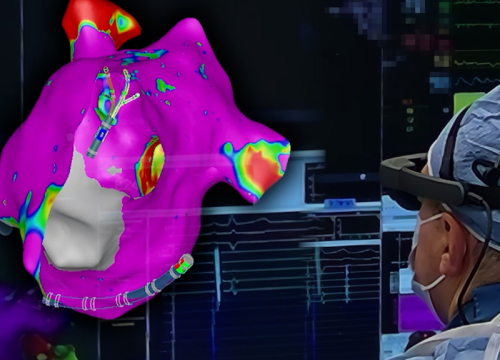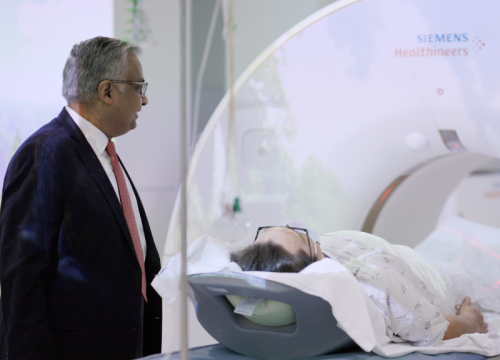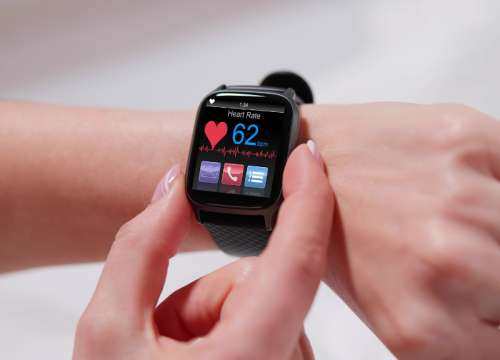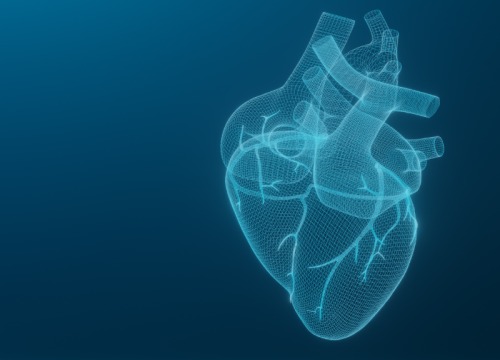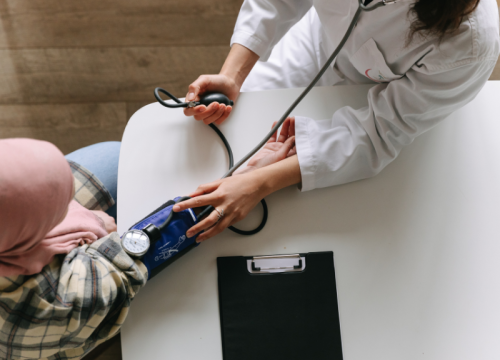Ambulatory electrocardiogram (ECG) monitoring is a noninvasive way to identify different types of arrhythmia (irregular heart rhythms). Unlike ECGs in a doctor’s office, ambulatory monitoring devices record your heart rhythm wherever you are, for a longer time.
Ambulatory monitoring helps electrophysiologists at Valley gather more information to identify the cause of symptoms like dizziness and shortness of breath. Then, we can recommend the best treatment to help you feel better.
Today’s portable heart monitoring devices are better than ever at detecting arrhythmias. They are also much more convenient and can record your heart’s electrical activity for days, weeks or even years.
Am I a Candidate for Ambulatory Monitoring?
Ambulatory monitoring can help detect arrhythmia if you have symptoms that come and go, such as:
- Rapid or pounding heartbeat (palpitations)
- Dizziness
- Fainting or near-fainting
- Chest pain
- Shortness of breath
We may also suggest an ambulatory monitoring device if you have already been diagnosed with an arrhythmia. This can help us determine if changing your treatment would improve your symptoms.
Our team may also recommend ambulatory ECG monitoring if you had a stroke but the cause is unclear. This can help detect atrial fibrillation (AFib), which raises your stroke risks.
Our expert electrophysiologists offer all the latest devices for ambulatory monitoring. We’ll explain these options and recommend which ones may be best for you.
Holter Monitors
Holter monitors are often used for ambulatory monitoring, especially for people with daily symptoms. These devices record your heart rhythm continuously for 24 to 48 hours.
Holter monitors can detect any type of arrhythmia. They are especially important for evaluating extra heartbeats called premature ventricular contractions (PVCs).
What to Expect with a Holter Monitor
Here’s what you can expect if you have a Holter monitor:
- When you come to our office, our team will place three to five wired or wireless electrodes on your chest. These will be connected to a small recording device (about the size of a cellphone) that you wear at your waist.
- We will ask you to write down what symptoms you have and when they occur in a diary.
- You will not be able to detach the electrodes or monitor. If you do, you will lose the recorded data.
- You will not be able to bathe, shower or swim while wearing the monitor.
- After 24 to 48 hours, you will return to our office. A trained technician will retrieve the data and share with our electrophysiology team.
- After reviewing your data, we will suggest a treatment plan to improve your symptoms.
Event Monitors
Unlike Holter monitors, event monitors do not record continuously.
There are different types of event monitors, including:
- Symptom event monitors: You carry these handheld devices with you, but they won’t start recording until you press a button. When you feel symptoms, you place the device on your chest and start recording. If you wear a device on your wrist, you turn it on to start recording.
- Looping memory monitors: These devices constantly monitor your ECG, but they will only save your data when you are having symptoms. You may or may not need to press a button to start recording. Some devices start recording on their own when they detect an irregular heartbeat.
What to Expect with an Event Monitor
Here’s what you can expect if you have an event monitor:
- You will carry the device for up to 30 days.
- When you have symptoms, you may need to start recording, depending on the device.
- The device will typically record up to 90 seconds of your heart’s activity.
- You will share the recorded data with our team using a telephone or computer.
Because these devices do not monitor heartbeats continuously, they may not be the best option if you do not have symptoms.
Patch Recorders
These devices are like other event monitors, but they do not use wires or electrodes. Instead, everything is contained in a patch that sticks to your chest and can be worn for up to two weeks.
What to Expect with a Patch Recorder
Here’s what you can expect if you have a patch recorder:
- You will come to the hospital or clinic to have the recorder placed.
- If you have chest hair, a member of our team will shave the area where the recorder will be placed.
- A provider will place the recorder on your chest.
- You will go home the same day.
- Some patch recorders can be worn while you bathe and shower. Others need to be removed during bathing and then reattached to the chest.
- You will send data from your recorder through your phone or computer to our team.
- After reviewing your data, we will suggest treatments to help you feel better.
Implantable Loop Recorders
If you have infrequent but severe symptoms like fainting, we may recommend an implantable loop recorder.
We may also recommend this device to help manage conditions such as:
- Atrial fibrillation (AFib)
- Atrial tachycardia
- Atrial flutter
An implantable loop recorder is a device the size of a paperclip that’s placed under the skin on your chest. It is designed to stay in the body for four years or more. Your doctor may recommend this device to capture your heart’s irregular electrical activity if external monitors cannot.
What to Expect with an Implantable Loop Recorder
Here’s what you can expect if you have an implantable loop recorder:
- You will come to the hospital to have the device implanted.
- You will receive local anesthesia.
- A physician from our team will place the recorder near your left breastbone.
- You will go home the same day.
- You will need to avoid bathing or showering for up to 48 hours after the device is implanted. After that, you can bathe and shower normally.
- Your loop recorder will send your ECG data to your smartphone wirelessly.
Like other event monitors, these devices can record your heart rhythm in two ways:
- They can automatically record your heart rhythm if it becomes irregular.
- You can manually record your heart rhythm when symptoms occur.
You can exercise with an implantable loop recorder. It will not interfere with airport security scanners, X-rays, MRI scanners or other imaging tests.
Smartphone ECG Monitors
Many companies have developed ECG monitoring devices that work with your smartphone or smartwatch for use at home.
Some devices have two electrodes where you can apply your fingers to monitor your rhythm. They send the ECG data to your smartphone using Bluetooth technology. The recordings are stored in an app, which has software to detect atrial fibrillation and other arrhythmias.
If you are interested in these tools, we can discuss how to use them. But they cannot replace other ambulatory monitoring devices. They are also not covered by insurance and need to be purchased out of pocket.
Why Choose Valley for Ambulatory Monitoring?
- Remote monitoring for your convenience: The data sent from your device is regularly monitored by a team of experts. This helps you avoid unnecessary trips to the clinic when your heart rhythm is under control.
- Expert analysis of your results: Our team takes time to review and explain your findings. We strive to answer all your questions and bring you peace of mind.
- A full range of advanced treatments: Valley’s Snyder Center for Comprehensive Atrial Fibrillation provides evidence-based care, including monitoring, for AFib and other arrhythmias. If you are diagnosed with an arrhythmia, we’ll develop a treatment plan tailored to your unique needs and preferences. This may include medication, cardioversion or ablation.
- A comprehensive team with recognized leaders: Our experienced electrophysiologists are active in the Heart Rhythm Society and lead research to better understand arrhythmias. They also collaborate with other experts from cardiology, imaging and other specialties.
- Quick access to expert care: We make it easy for you to receive care from our electrophysiology team. We usually see patients within a day or two and even offer same-day appointments. We also strive to make communication with our team as easy as possible. Our nurse coordinators are here to connect you to whatever services you need.



